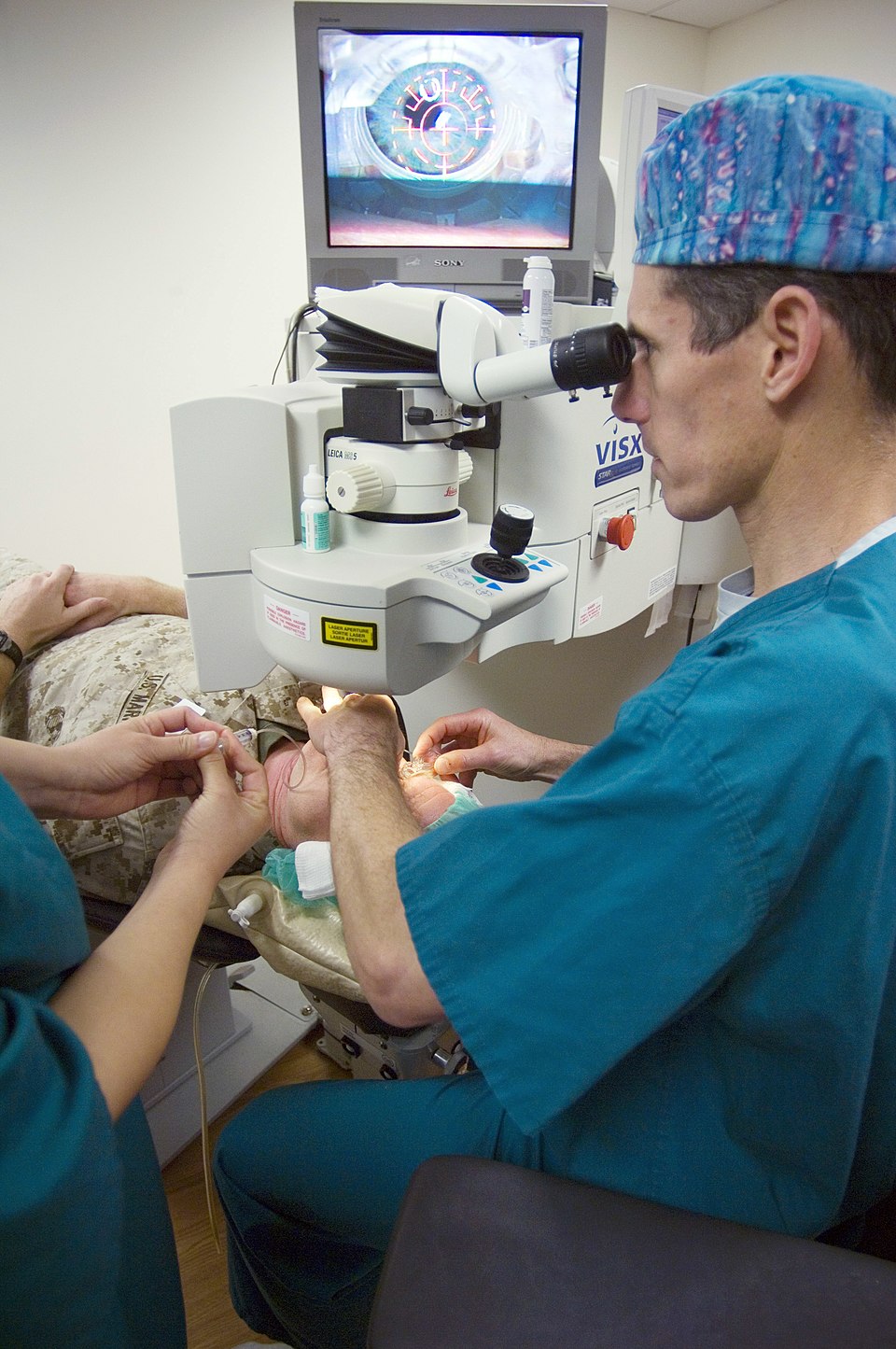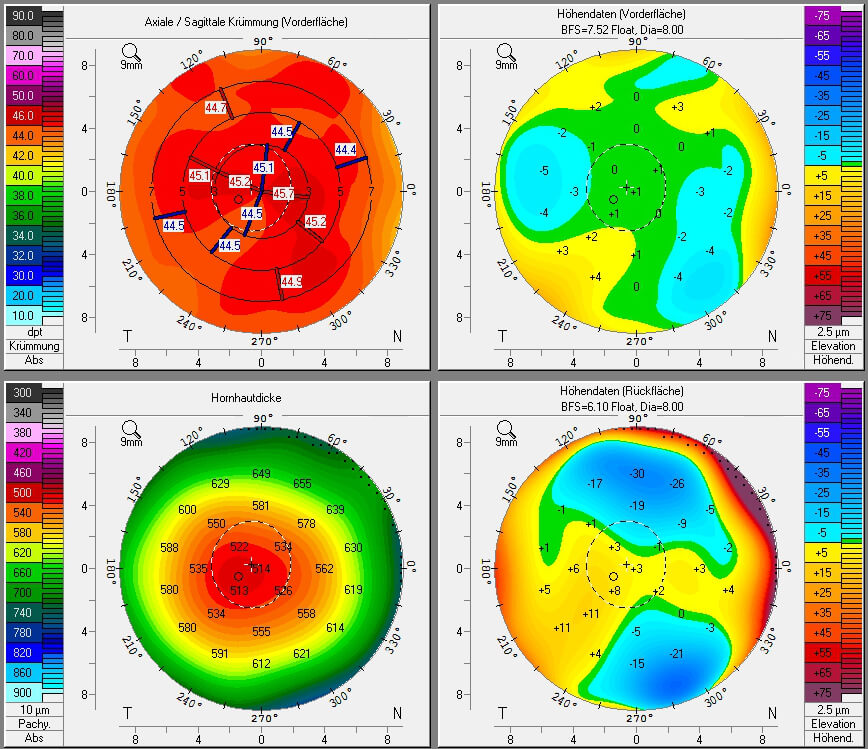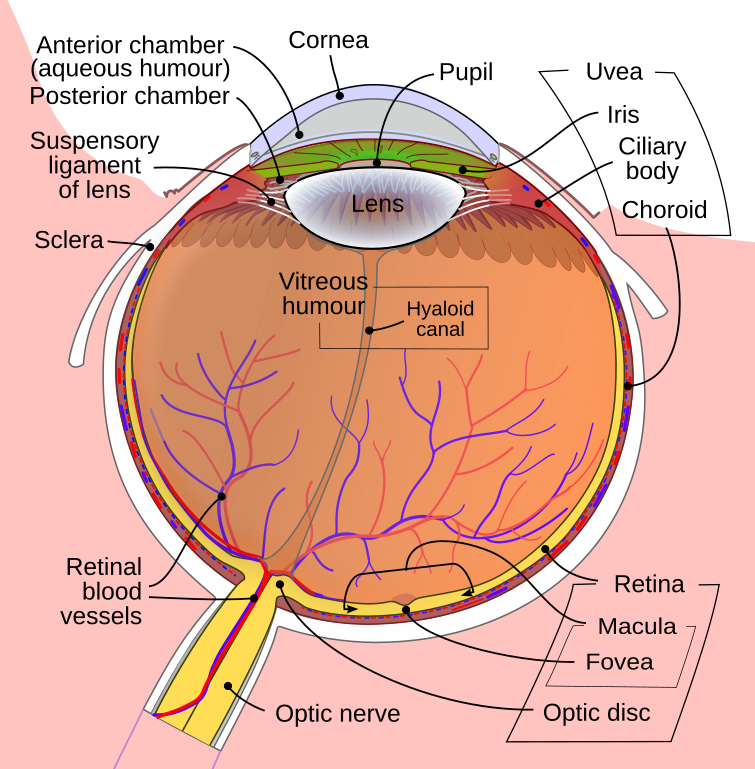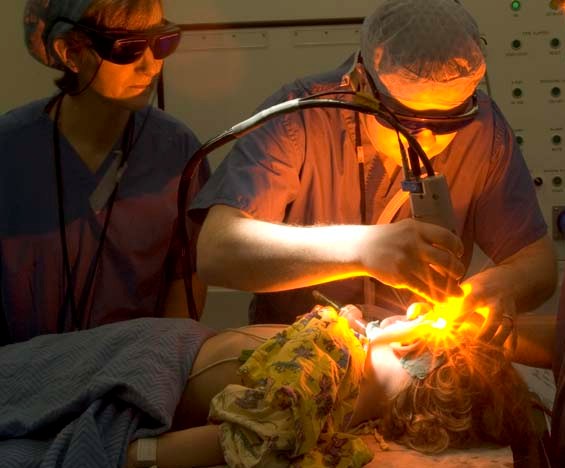LASIK
also known as Laser-Assisted In Situ Keratomileusis
Last updated August 6, 2025
Medical information on this page is for educational purposes only and is not a substitute for professional medical advice, diagnosis or treatment.
See our Terms & Conditions and Consent for Telemedicine for details.




Overview
LASIK is a quick, outpatient laser procedure that reshapes the clear front window of the eye (cornea) so light focuses sharply on the retina. It can correct common refractive errors—nearsightedness, farsightedness, and astigmatism—often letting people see 20/20 without glasses. More than twenty-five million U.S. eyes have been treated since the first FDA approvals in the late 1990s, and satisfaction rates stay above 90 %. The surgery usually takes less than 15 minutes for both eyes, with most patients back to computer work the next day. Visual recovery is fast because the surface layer stays largely intact, reducing discomfort compared with older techniques.12
How the Procedure Works & Options
Modern LASIK is performed under topical drops. A femtosecond laser or microkeratome fashions a paper-thin corneal flap about the size of a contact lens. The surgeon lifts the flap and applies cool ultraviolet pulses from an excimer laser to reshape the underlying tissue; the flap is then repositioned to self-seal. Wavefront-guided and topography-guided profiles can customize the pattern to reduce glare and halos. Alternatives include bladeless LASIK (all-laser flap), PRK (surface ablation without a flap), and SMILE (small-incision lenticule extraction) for certain prescriptions. Most centers now offer lifetime enhancement policies and digital eye-tracking to boost precision.34
Who Is a Candidate?
Ideal candidates are age 18 or older, with a stable glasses or contact-lens prescription for at least a year and healthy corneas that are thick enough for safe reshaping. Common guidelines include up to −12.00 D of myopia, +6.00 D of hyperopia, and 6.00 D of astigmatism. People with uncontrolled dry eye, keratoconus, cataract, glaucoma, autoimmune disease, or who are pregnant or nursing should postpone or avoid LASIK. A detailed exam measures corneal thickness, topography, and pupil size to flag risks before surgery.56
LASIK Suitability Score
Enter your details below to check your suitability for this treatment
Suitability Level
Recommendation
Benefits and Limitations
Benefits
• Rapid visual recovery—most patients drive the next day.
• High accuracy: over 95 % reach 20/40 or better, the legal driving level.
• Little or no postoperative pain and no bandage contact lens needed.
Limitations
• Reading glasses are still needed later in life as presbyopia develops.
• Very high prescriptions or extremely thin corneas may require PRK or implantable lenses instead.
• Insurance rarely covers elective refractive surgery; average U.S. cost is $2 000–$3 000 per eye.
AAO patient surveys show more than 96 % would recommend LASIK to family or friends, yet realistic goals—such as “glasses-free for most activities” rather than “perfect vision forever”—improve satisfaction.78
Risks and Side Effects
LASIK complications are uncommon, but informed consent is vital. Transient dry eye, light sensitivity, and glare around headlights affect up to 30 % of patients during the first few months. Serious problems such as infection, flap wrinkles, or ectasia occur in roughly 1 case per 2 000. Data from the FDA-NEI-DoD PROWL studies found fewer than 1 % experienced vision-reducing symptoms that interfered with daily life at three months. Regular artificial-tear use and precise screening for corneal weakness have further reduced risk.910
Recovery and Long-Term Care
Plan to rest the day of surgery. Mild scratchiness or watering is normal for a few hours. Most surgeons schedule check-ups at one day, one week, and one month to confirm healing. You’ll use antibiotic drops for a week and anti-inflammatory drops for two to four weeks, plus preservative-free tears as needed. Avoid swimming pools, eye makeup, and contact sports for a week, and don’t rub your eyes while the flap bonds. Vision usually stabilizes by three months, but enhancements can fine-tune residual blur after that window.1112
Latest Research & Innovations
Researchers are extending laser precision with high-definition aberrometry and optical-coherence-tomography-guided depth control. Topography-guided LASIK now treats irregular corneas once considered untreatable. The FDA-qualified PROWL questionnaire lets new lasers show patient-reported visual quality, not just letter charts. Gene-based corneal-strengthening therapies and pharmacologic treatments for presbyopia may soon pair with laser correction to delay reading glasses. Small-incision lenticule extraction (SMILE) offers flap-free reshaping with lower dry-eye risk and continues to gain FDA approvals.
Clinical trials also explore smart contact lenses that map microscopic healing and personalized algorithms that adjust laser energy for your unique corneal biomechanics.1314
Recently Published in Peer-Reviewed Journals
BMC ophthalmology
July 1, 2025
Efficacy of small incision lenticule extraction (SMILE), femtosecond-assisted laser in situ keratomileusis (FS-LASIK), and toric implantable collamer lens (TICL) implantation in correcting myopia with high astigmatism: a vector analysis.
Jiao X, Xue W, Zhou Z, et al.
BMC ophthalmology
July 1, 2025
Flap amputation for severe epithelial ingrowth presenting as a corneal cyst: a case report.
Al Somali A, Alshaibani AK, Alzaher F, et al.
Ophthalmology
June 5, 2025
Prospective Intraindividual Comparison of Automated Customized Ray-Tracing-Guided versus Wavefront-Optimized LASIK.
Khoramnia R, Naujokaitis T, Blöck L, et al.
Next Steps – See a Refractive Surgeon
If you’re tired of reaching for glasses or contacts, a consultation with a refractive surgeon can clarify whether LASIK, PRK, or another option best fits your eyes and lifestyle. The doctor will review your prescription history, corneal scans, and tear-film health, then walk you through costs, expectations, and safety. You can connect with the right specialist on Kerbside and move toward clearer, hassle-free vision.
Bring your latest glasses prescription, a list of medications, and questions about work, sports, or night driving so the visit addresses what matters most to you.1516
